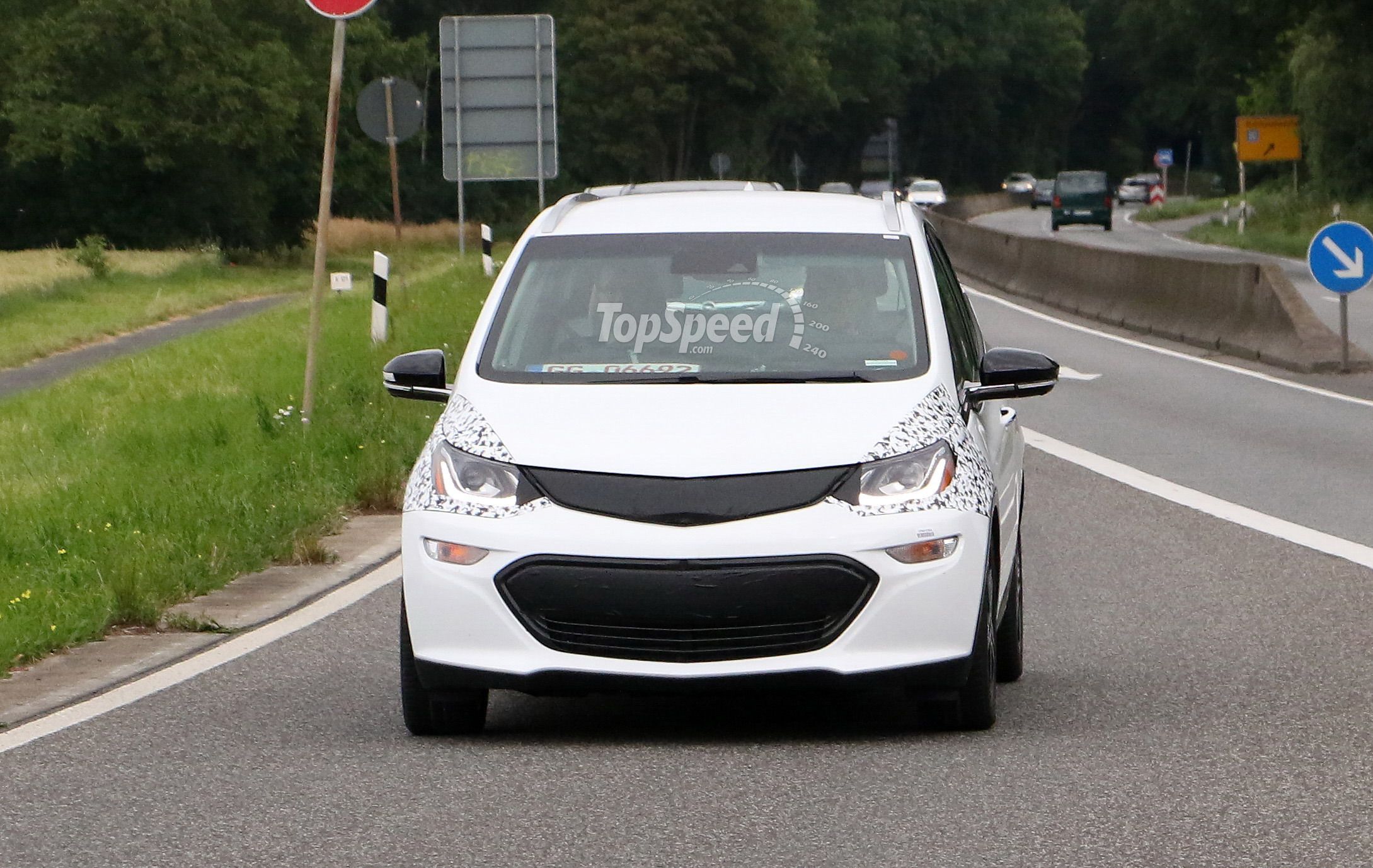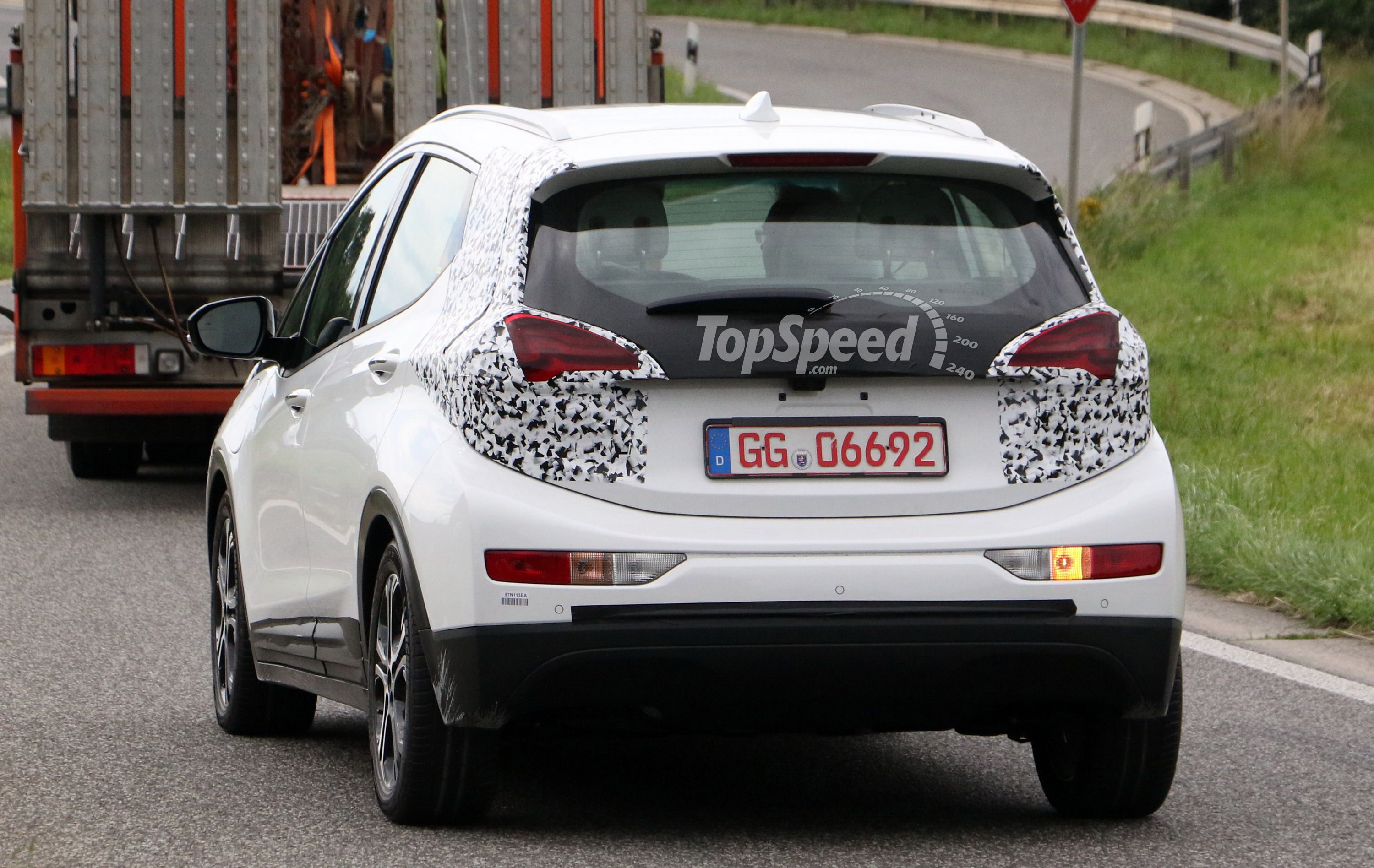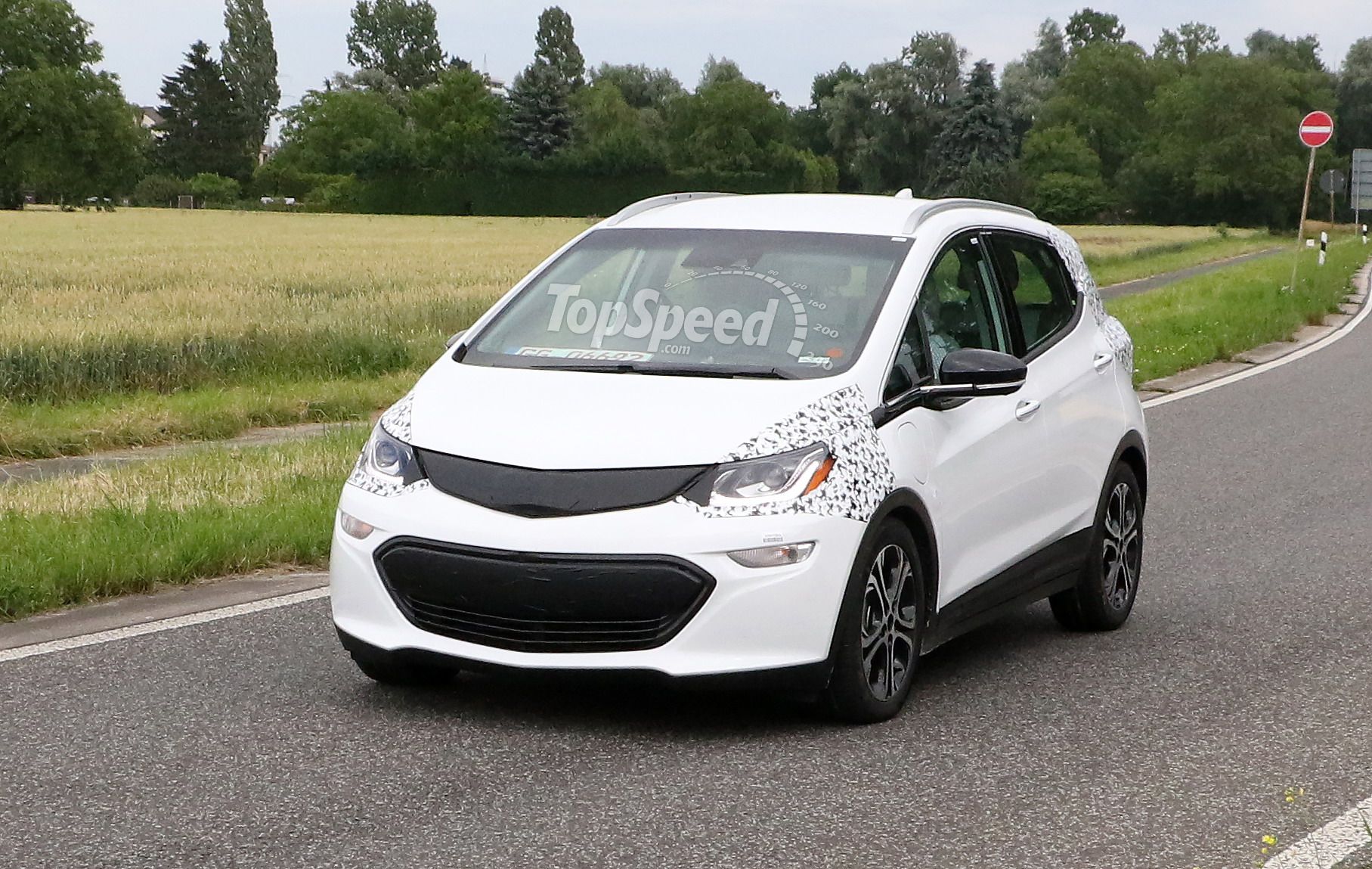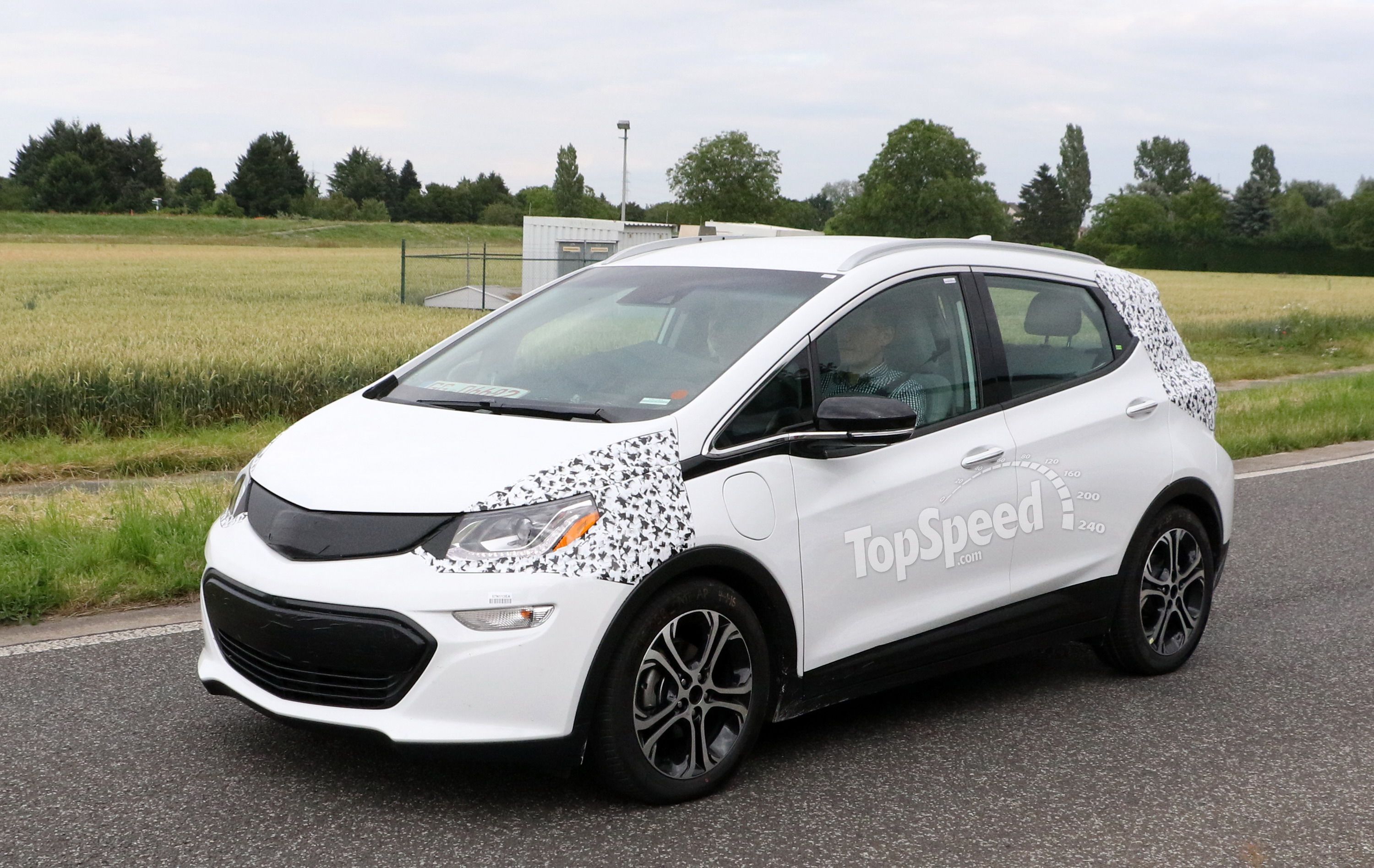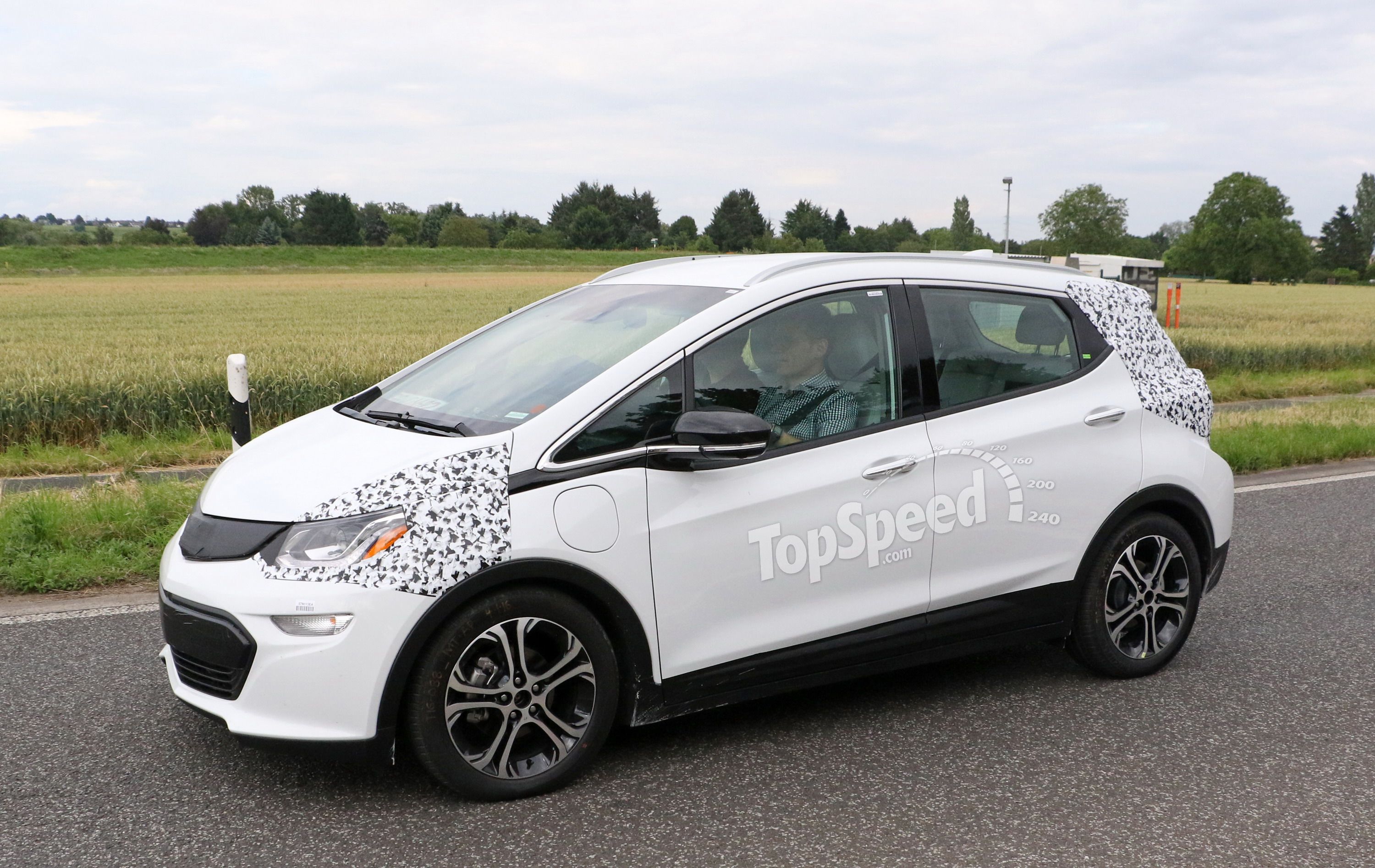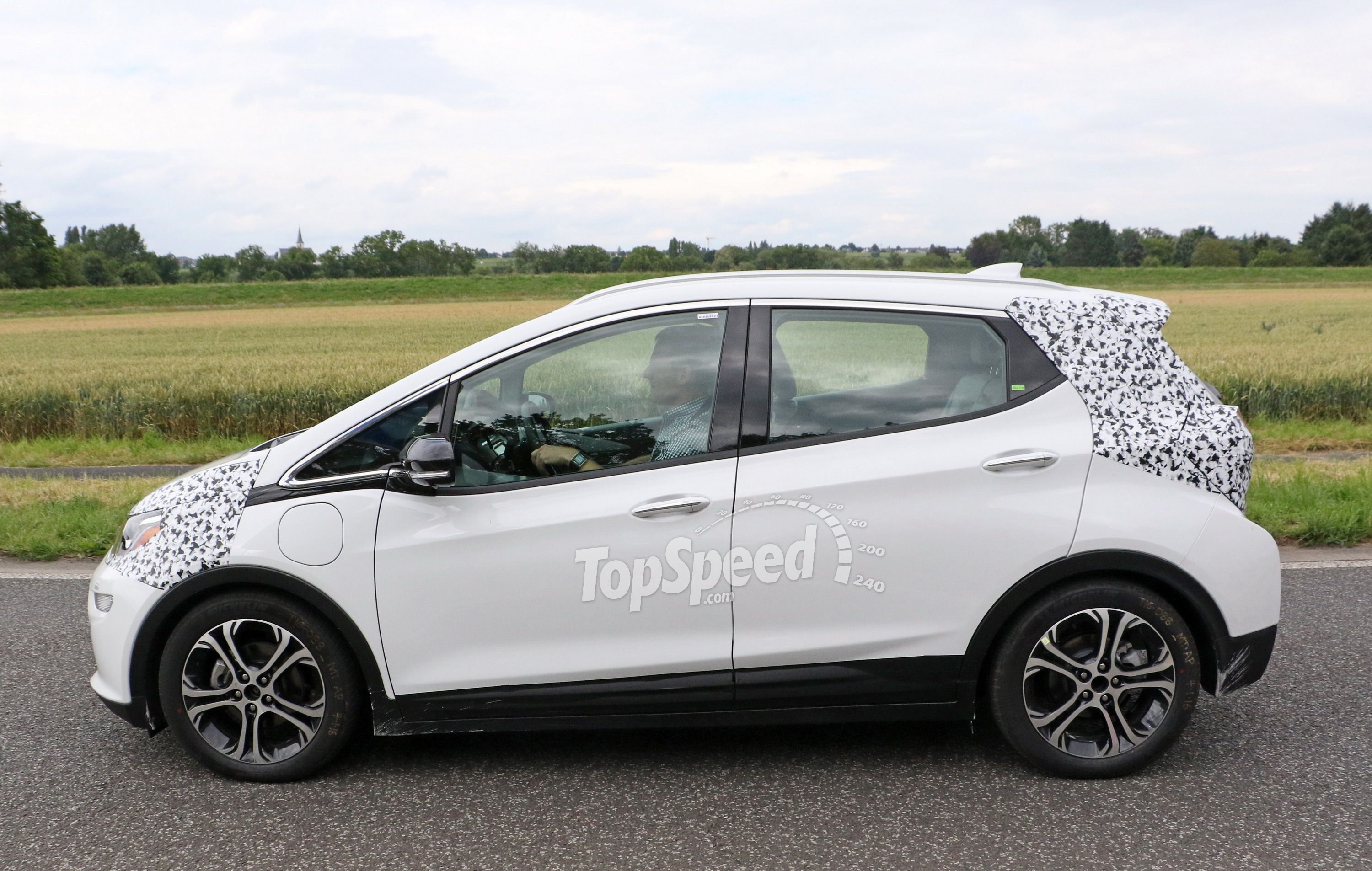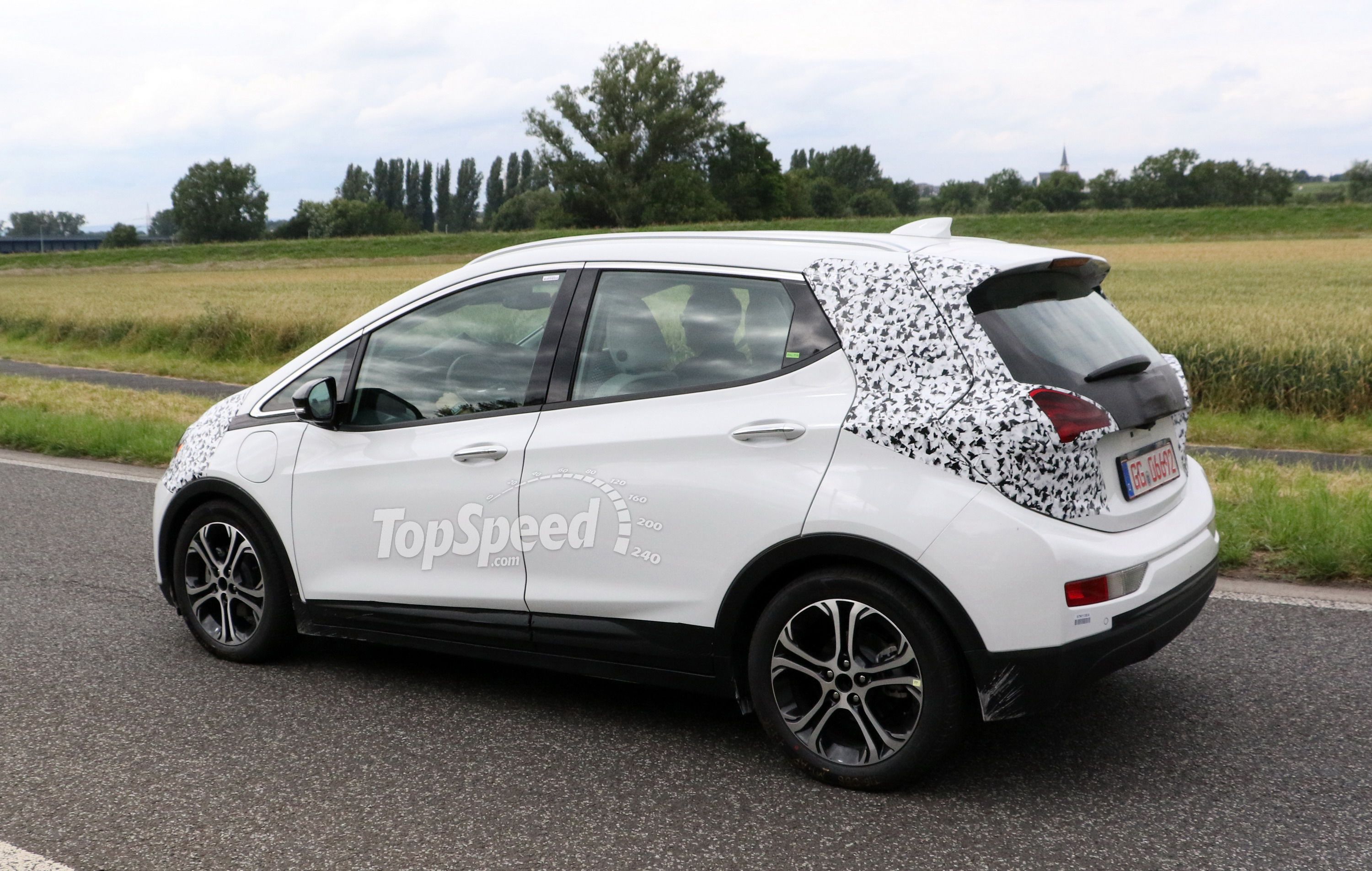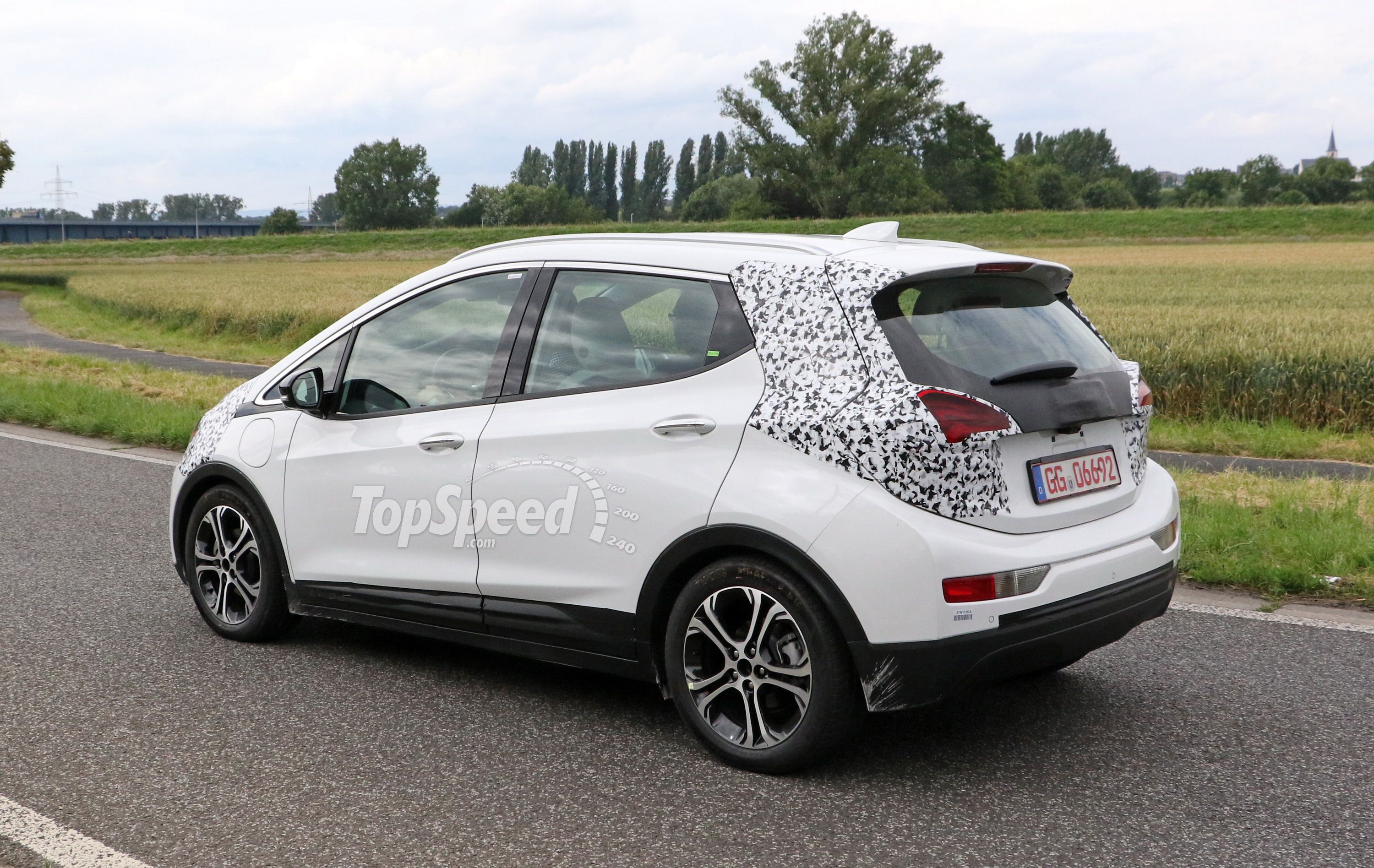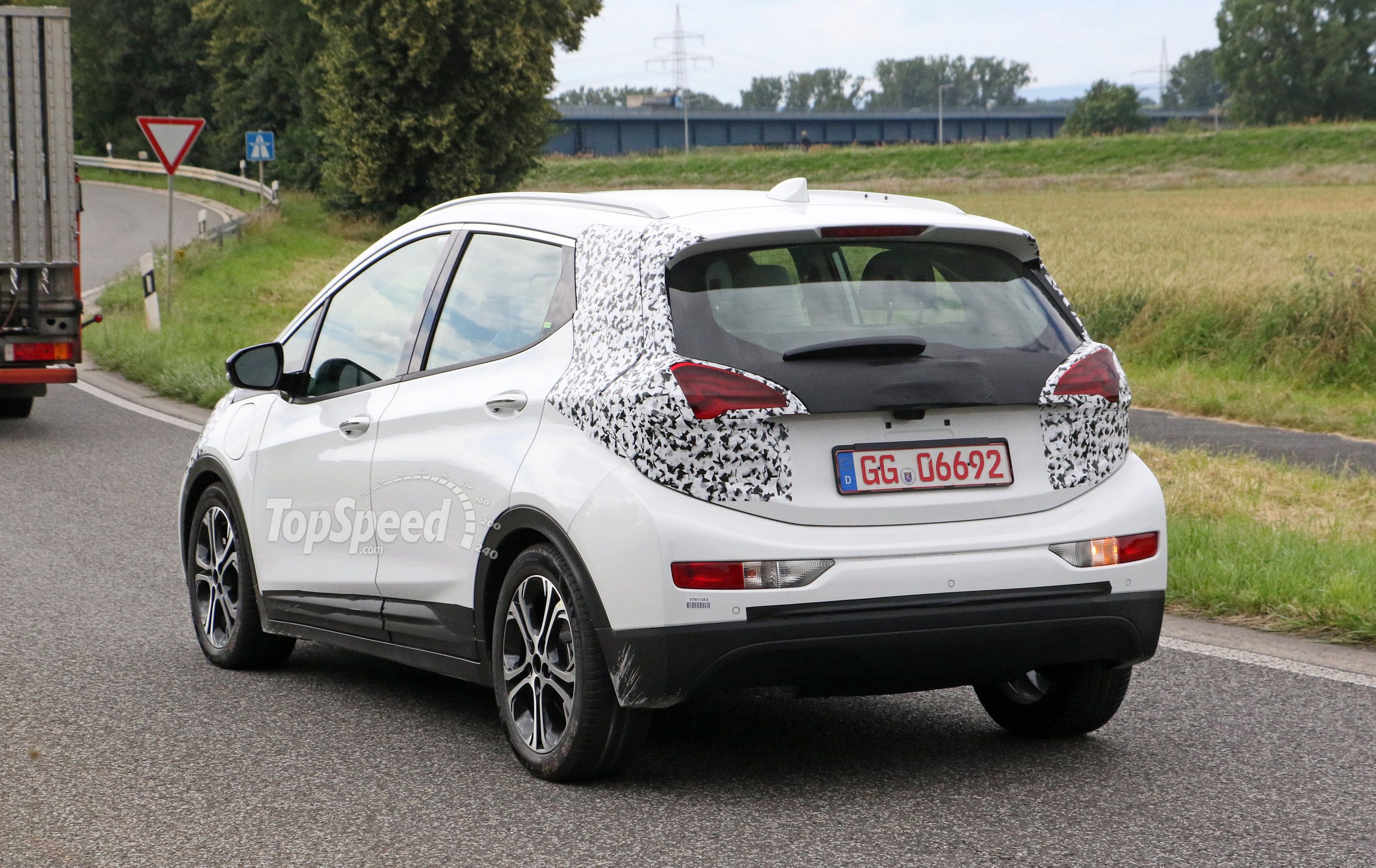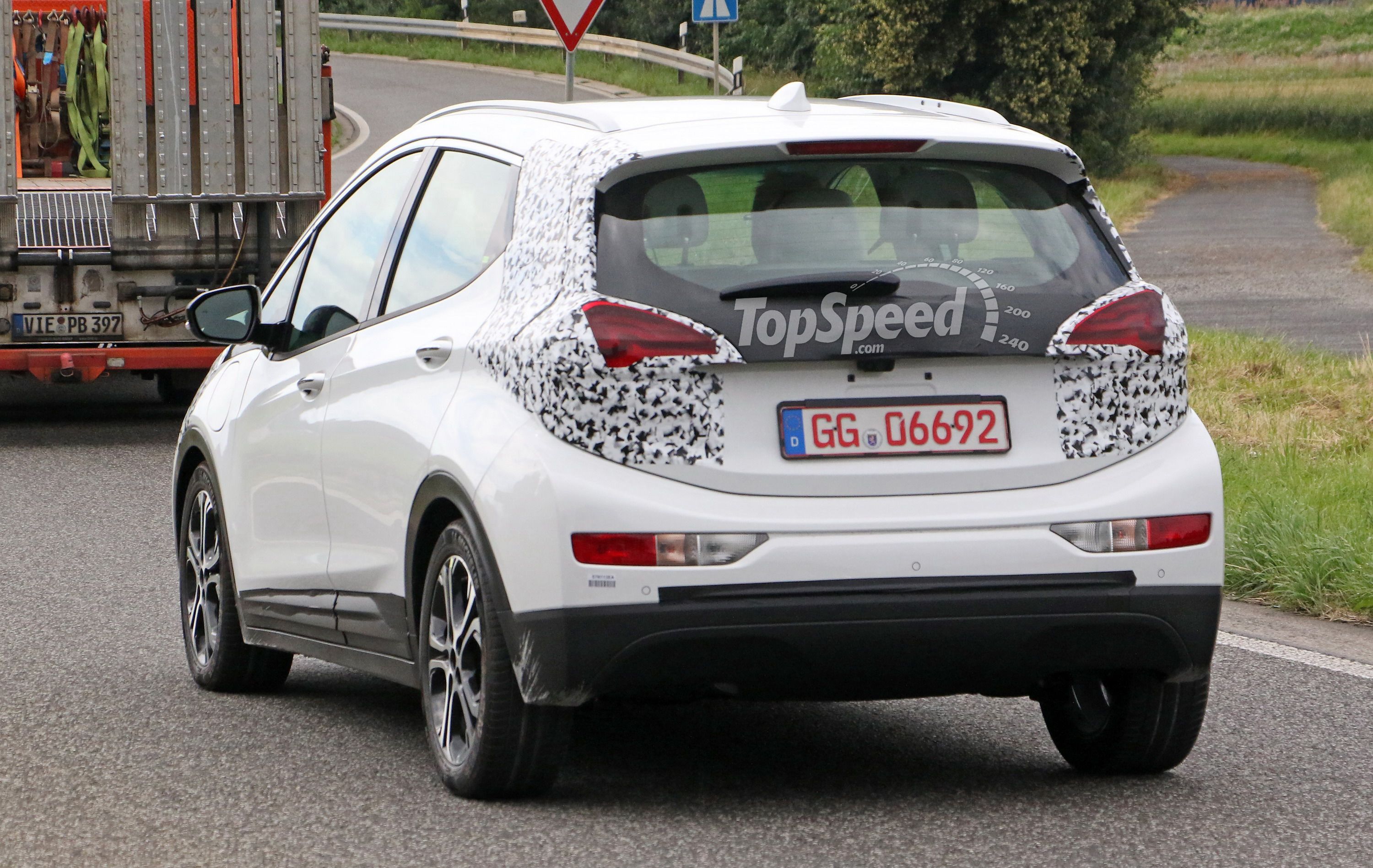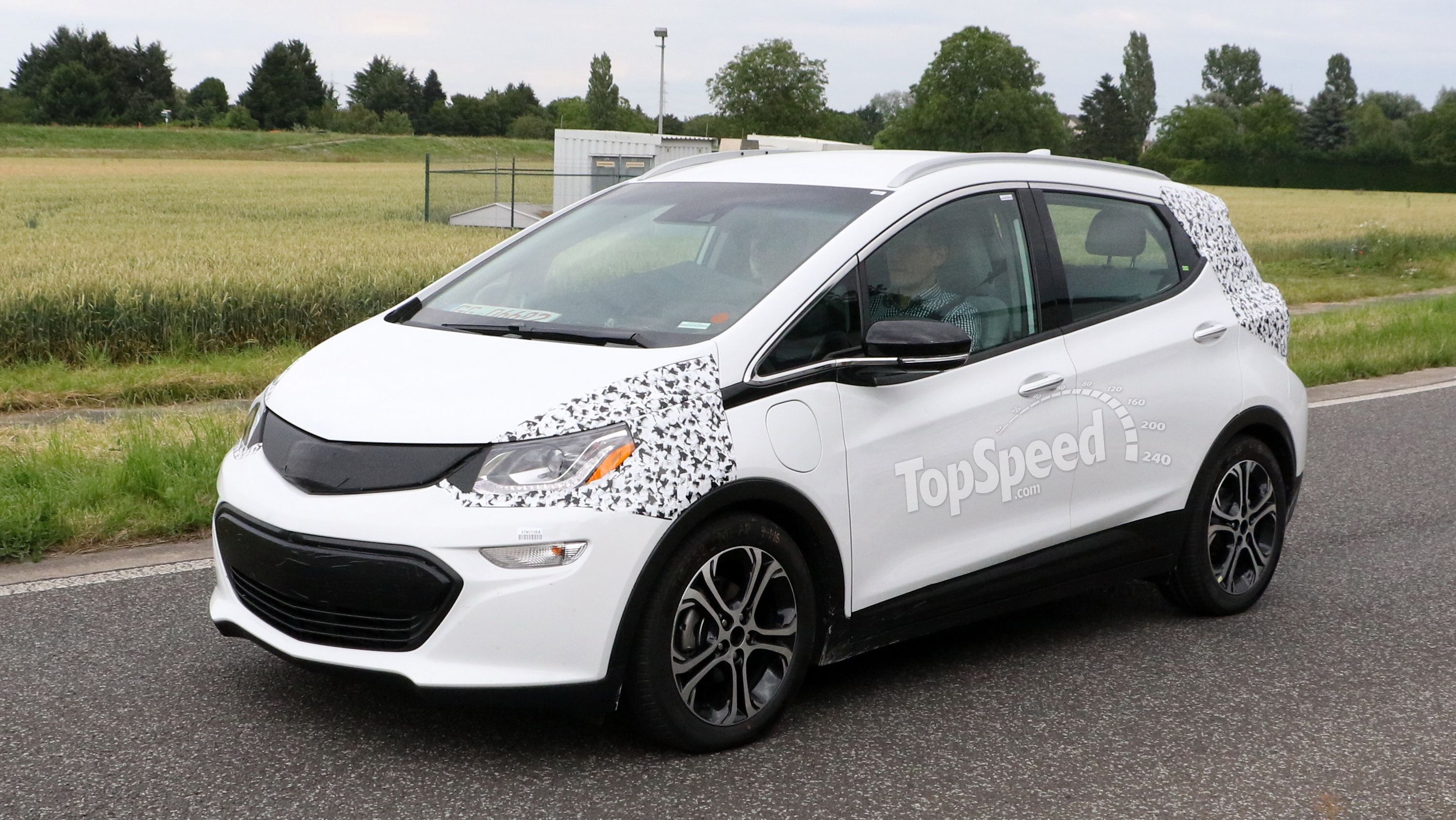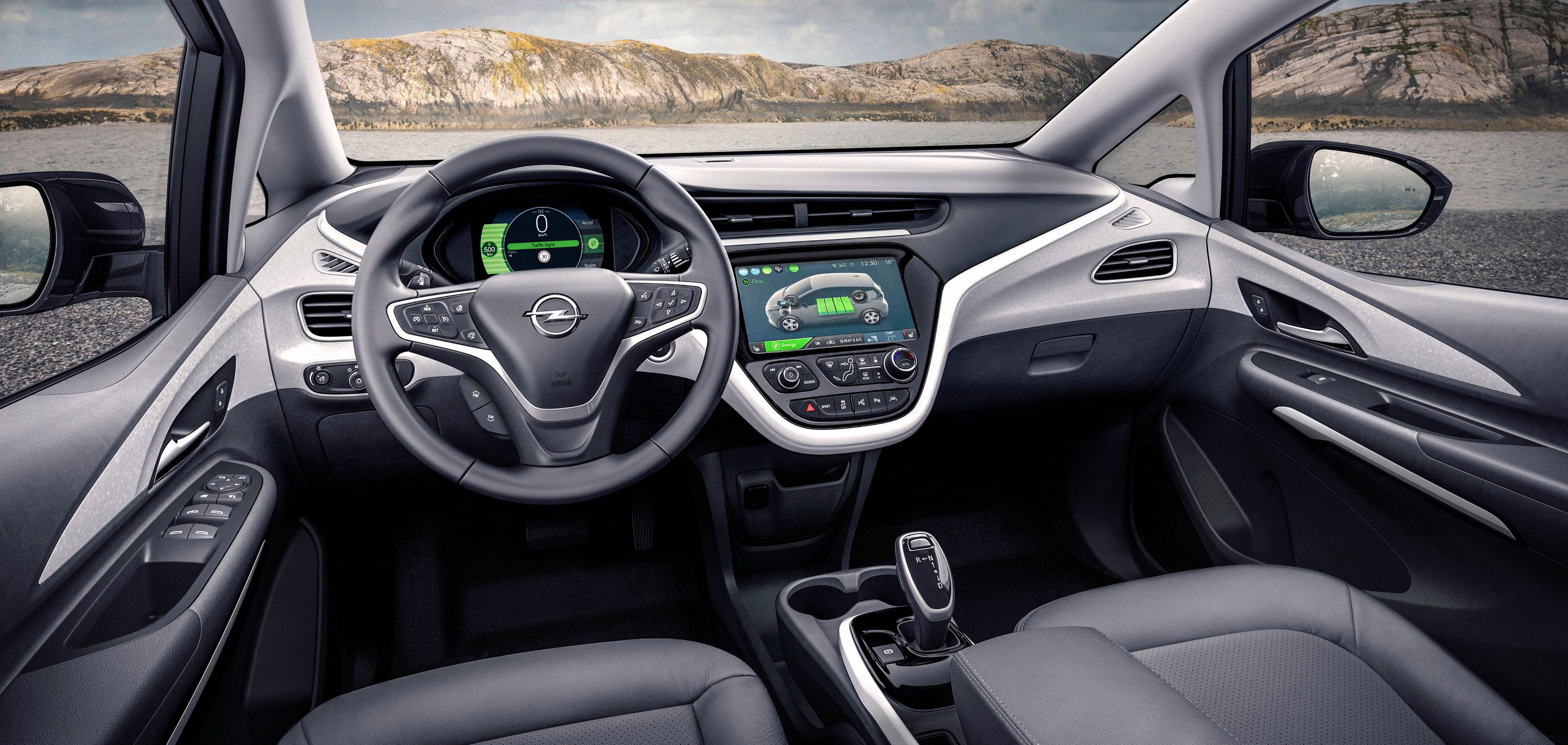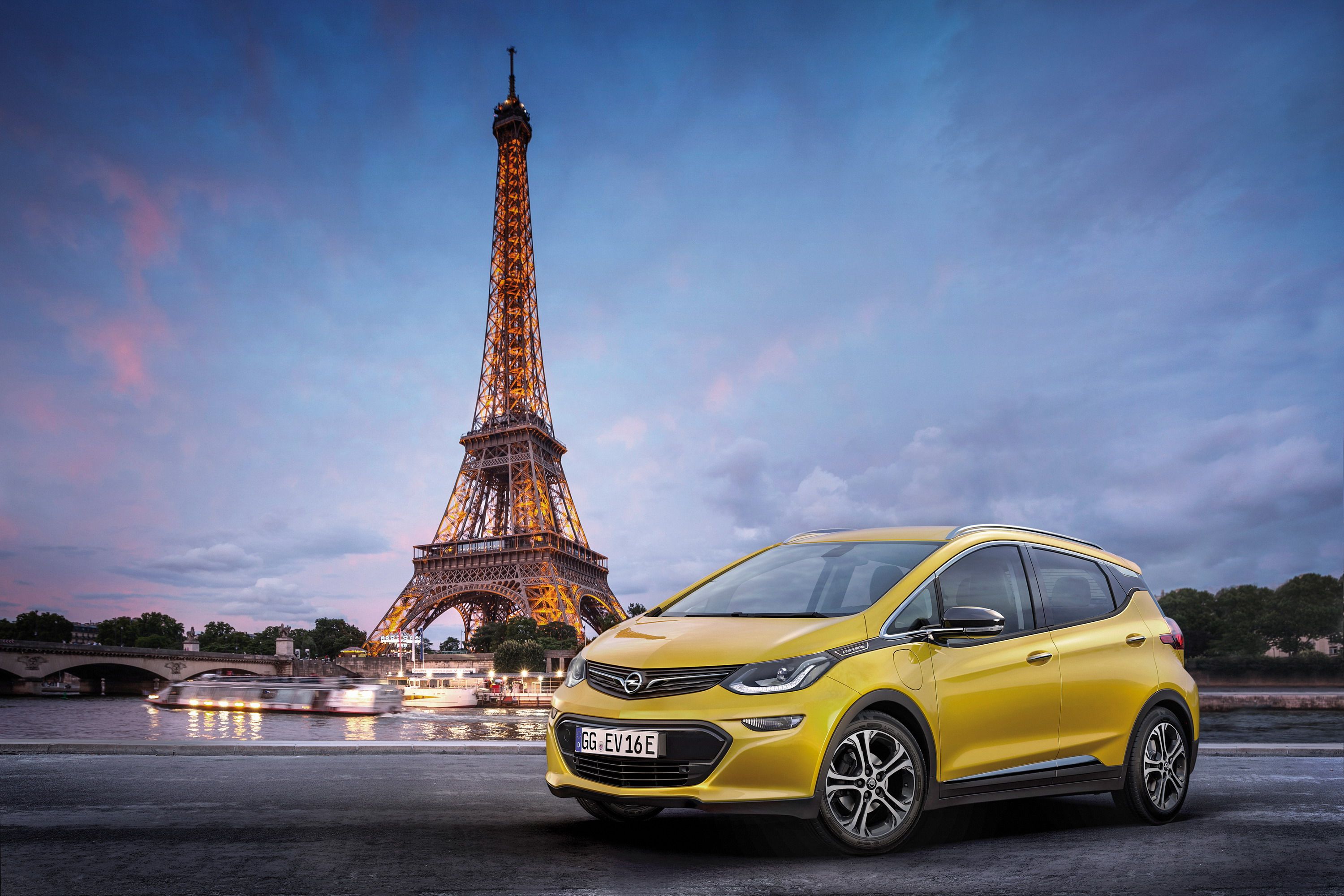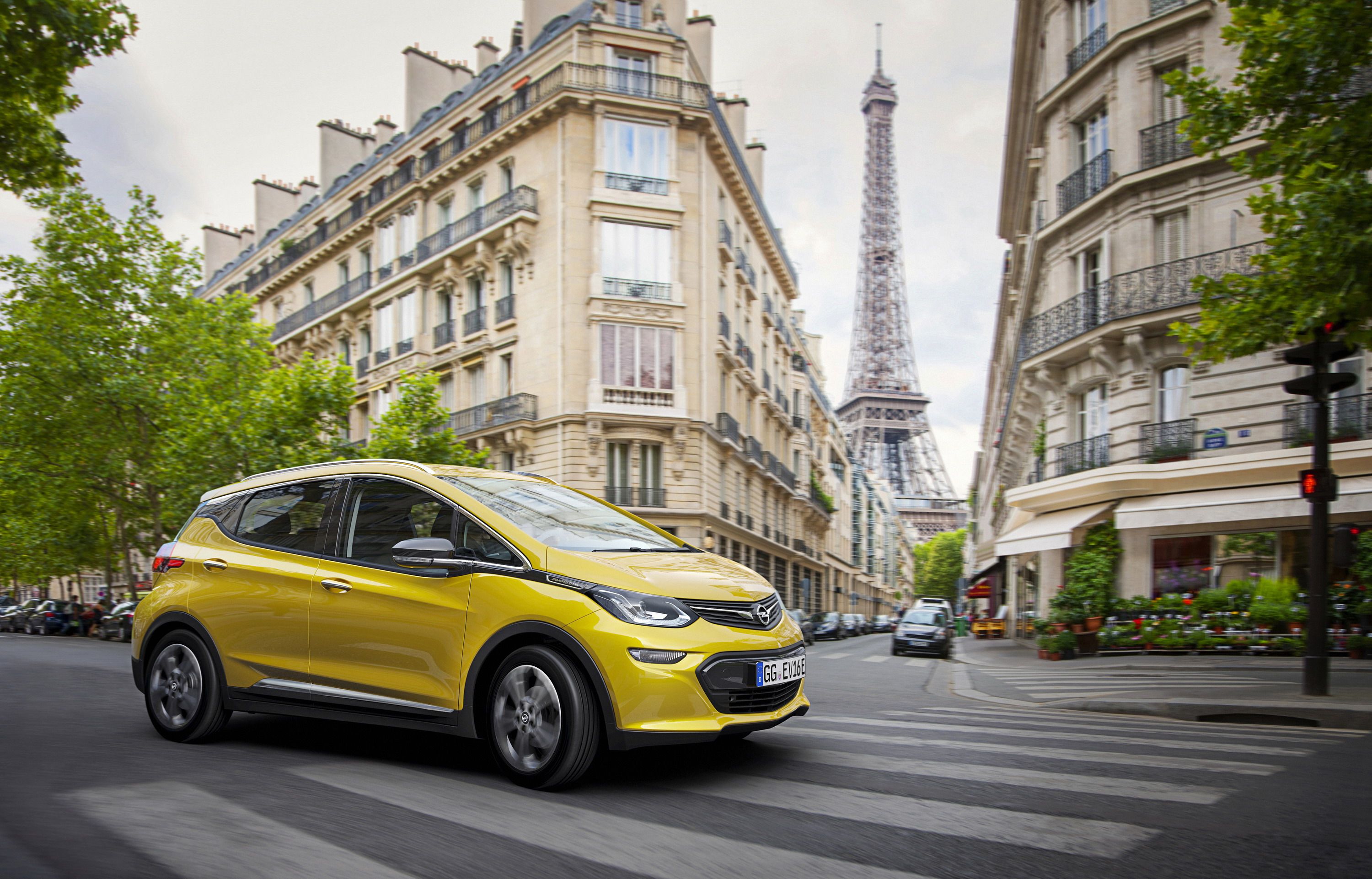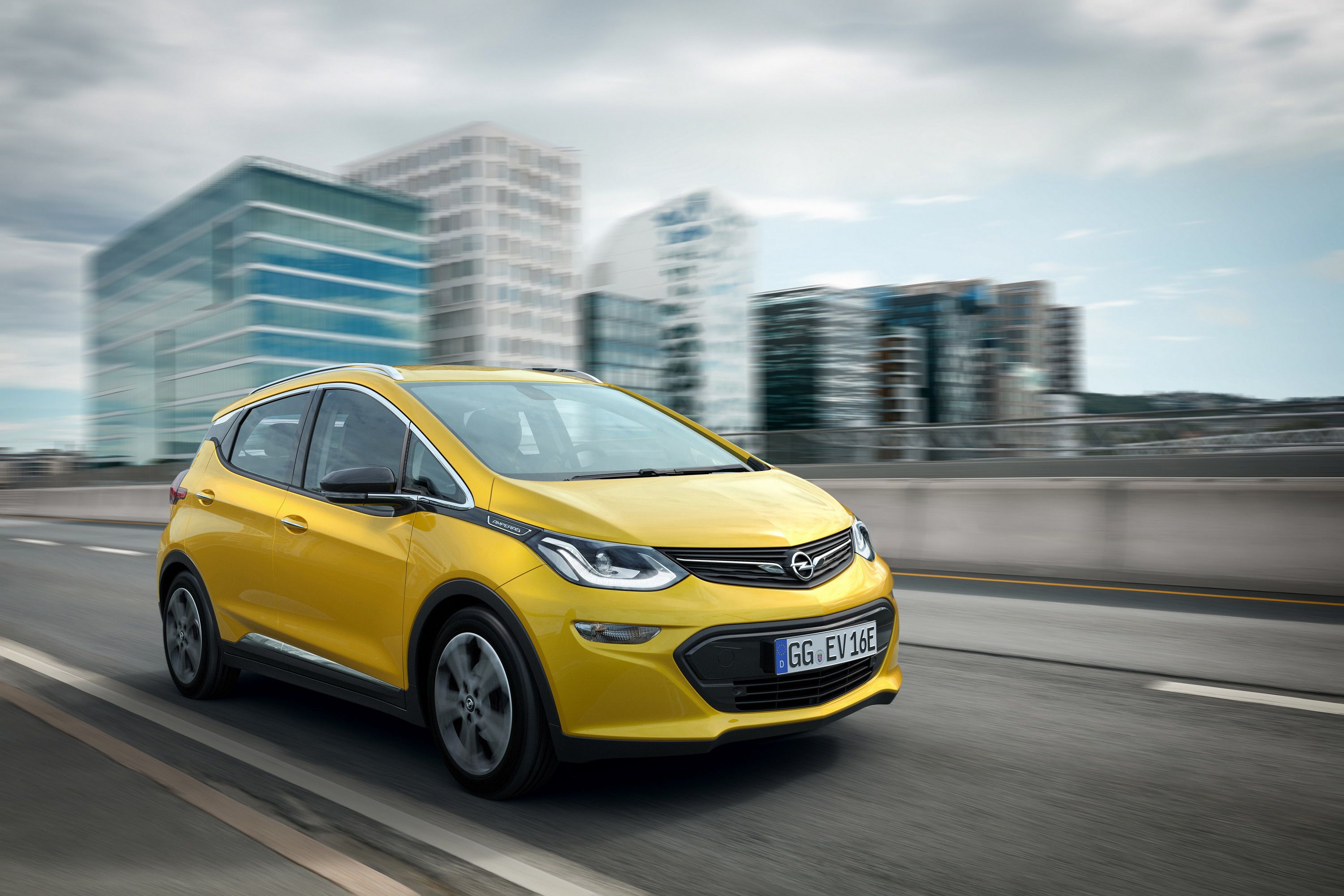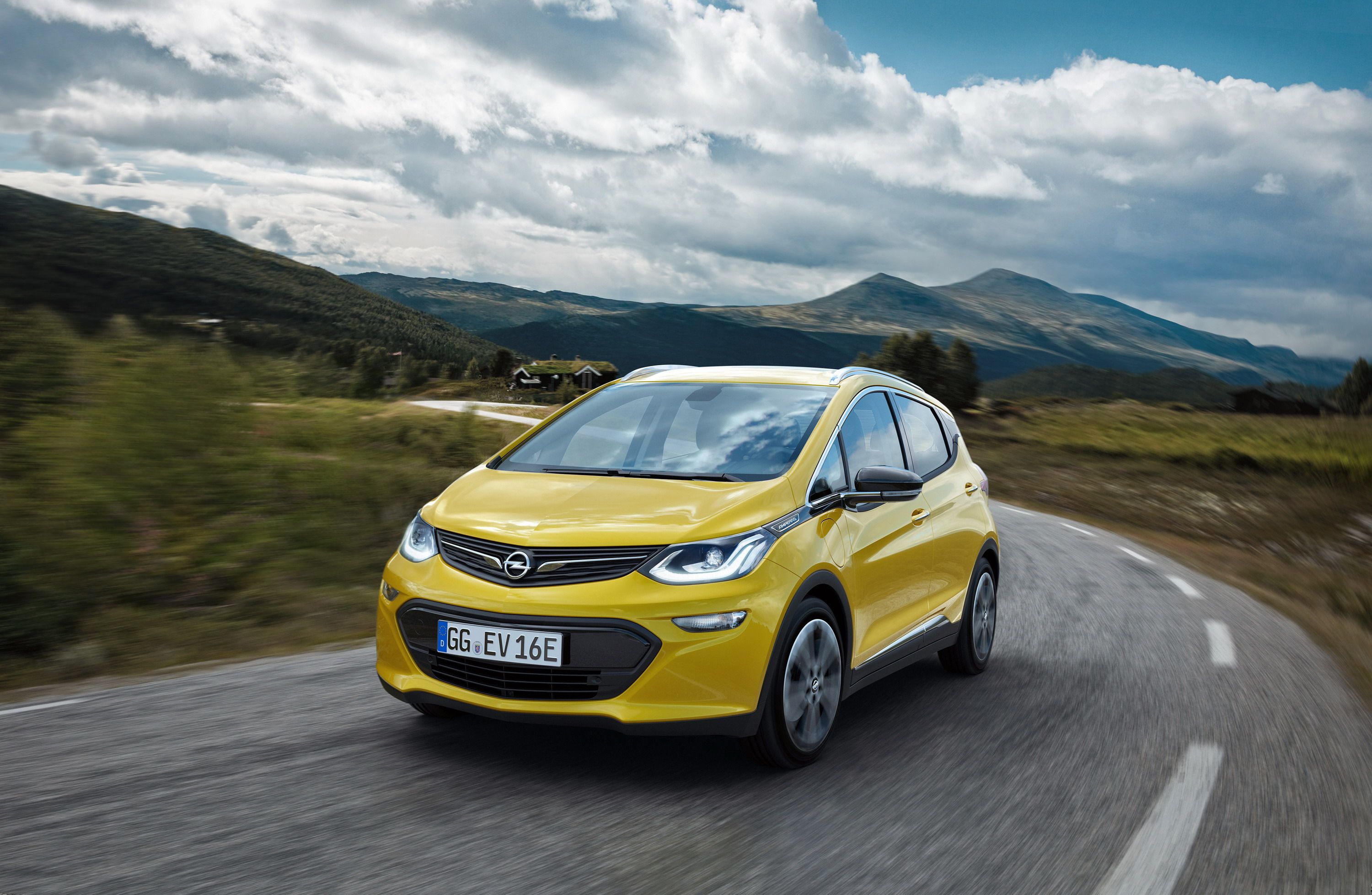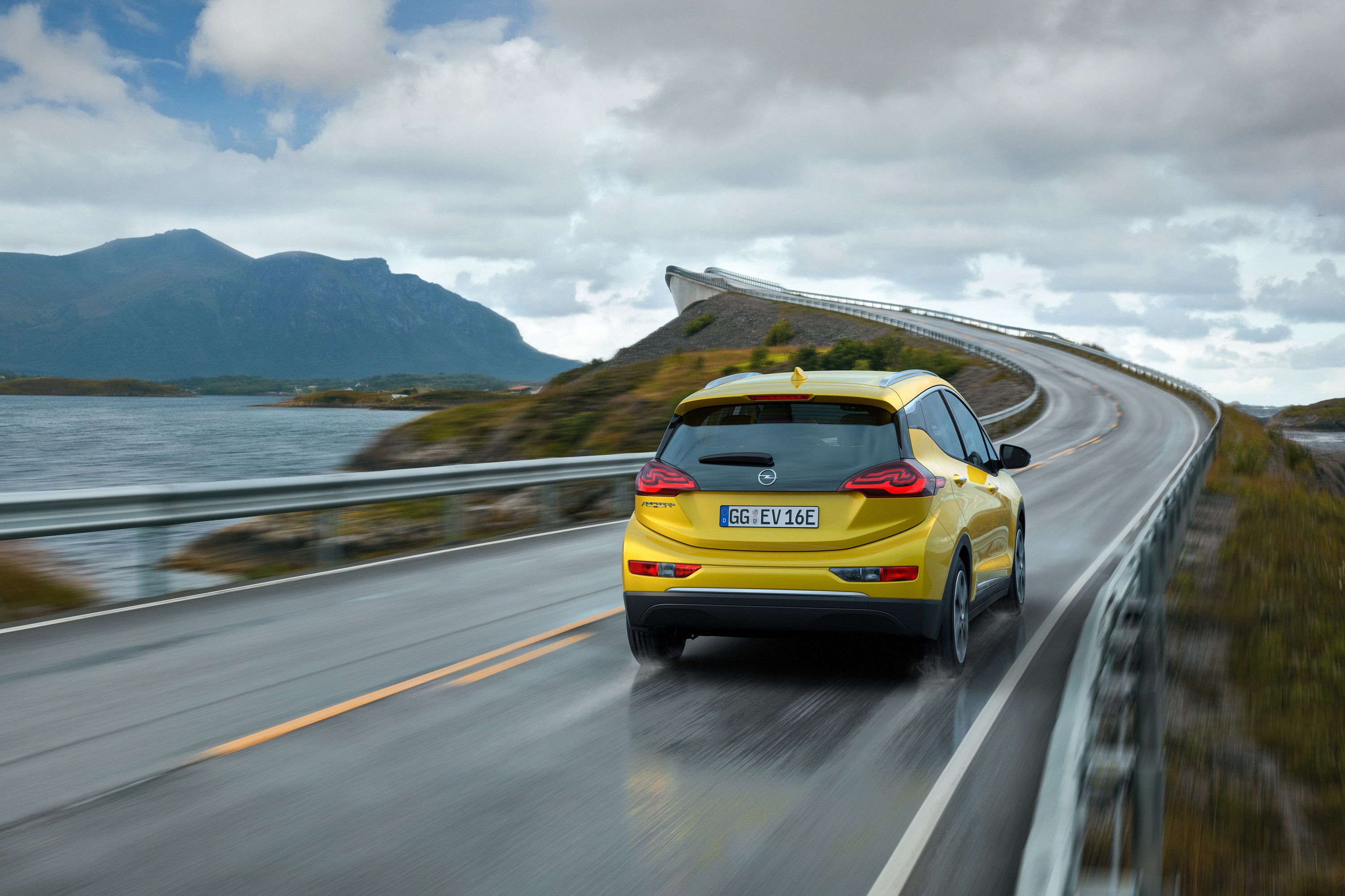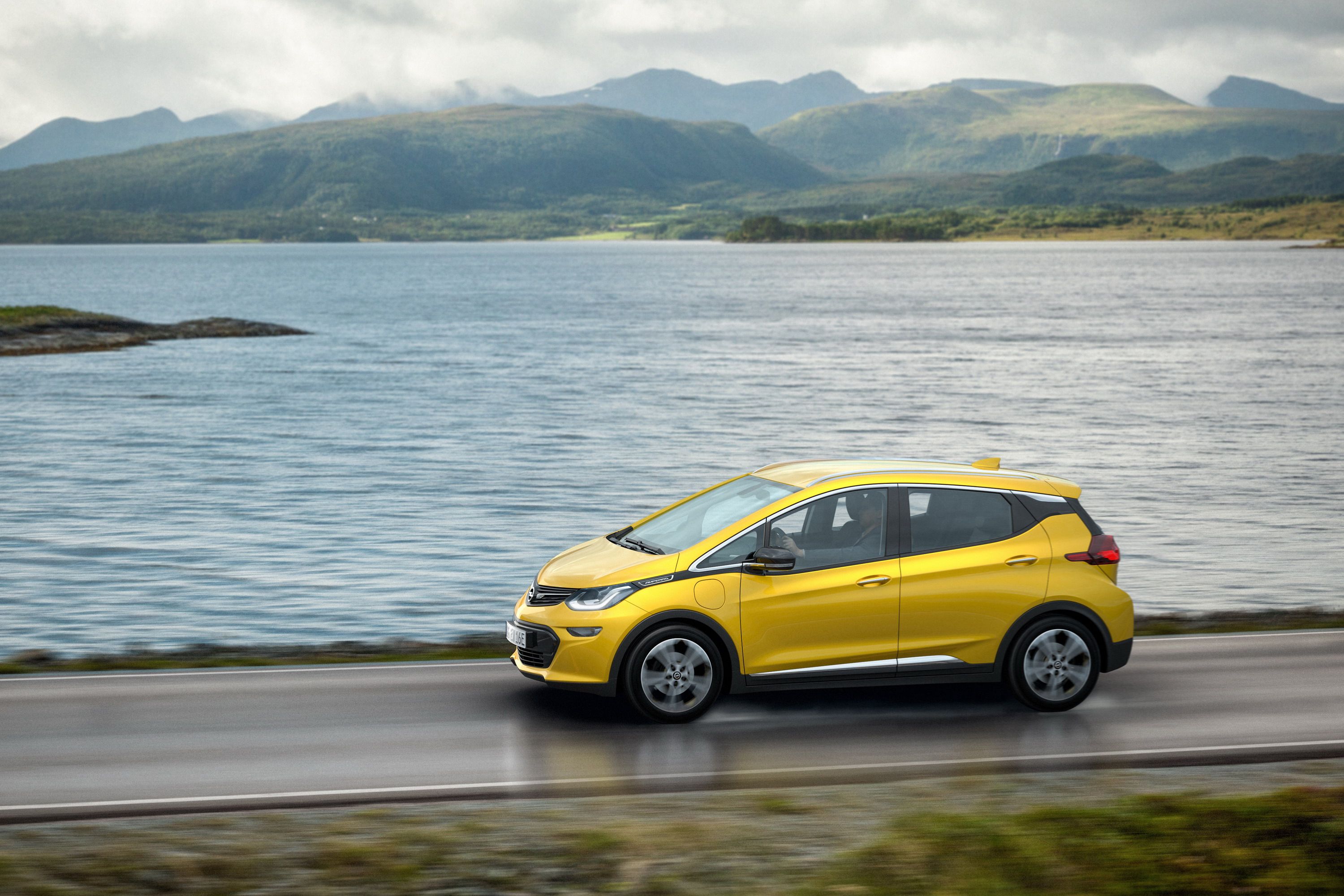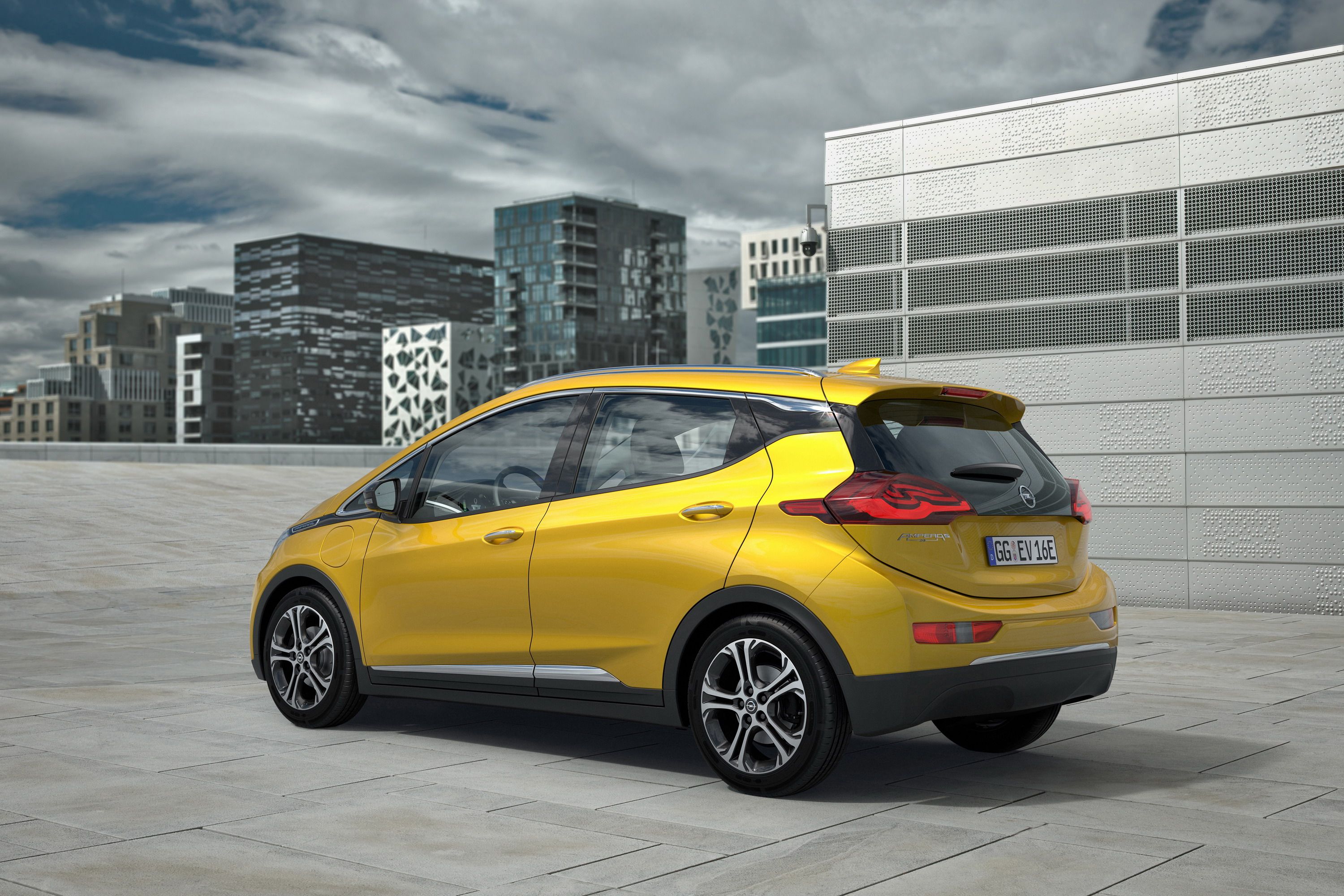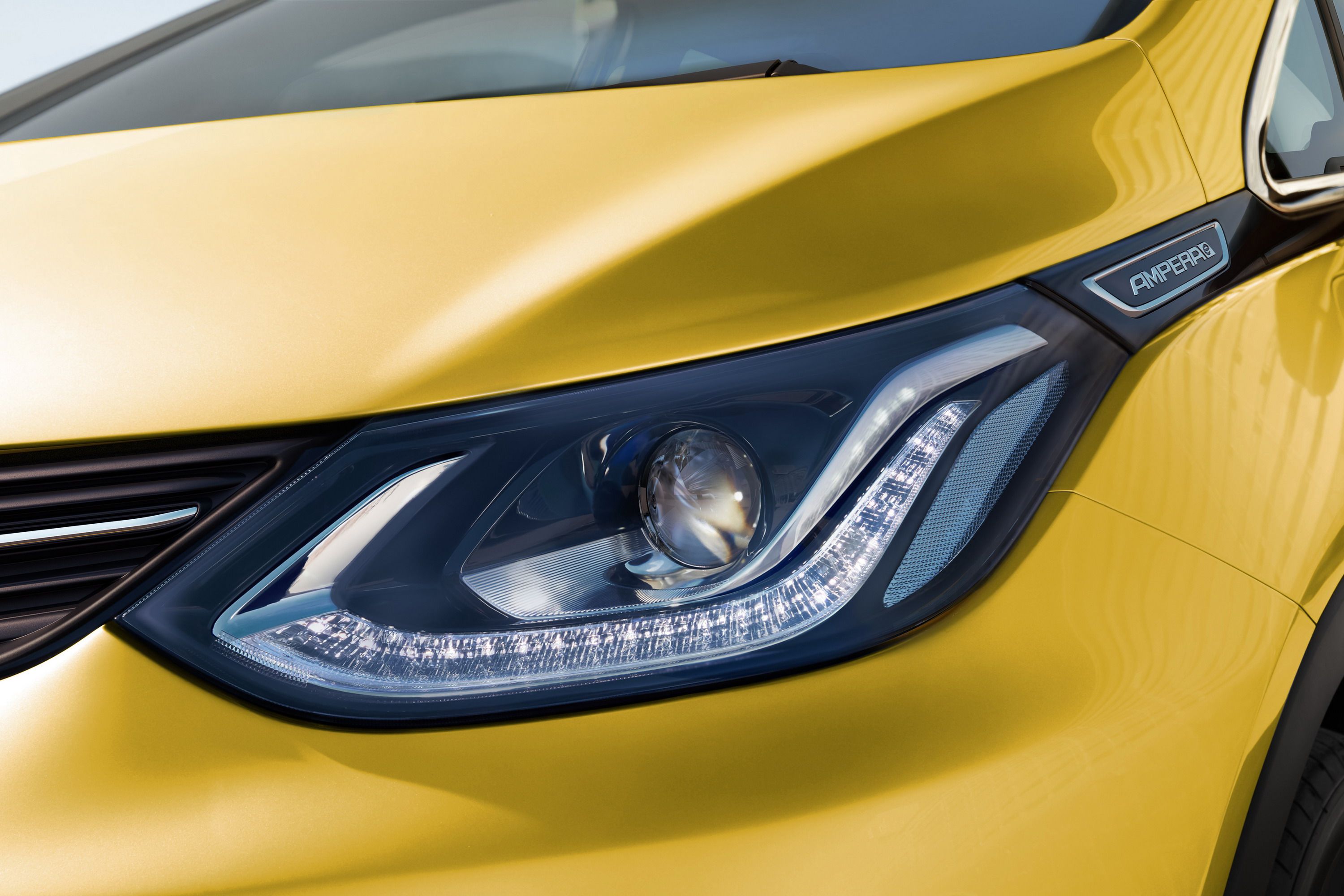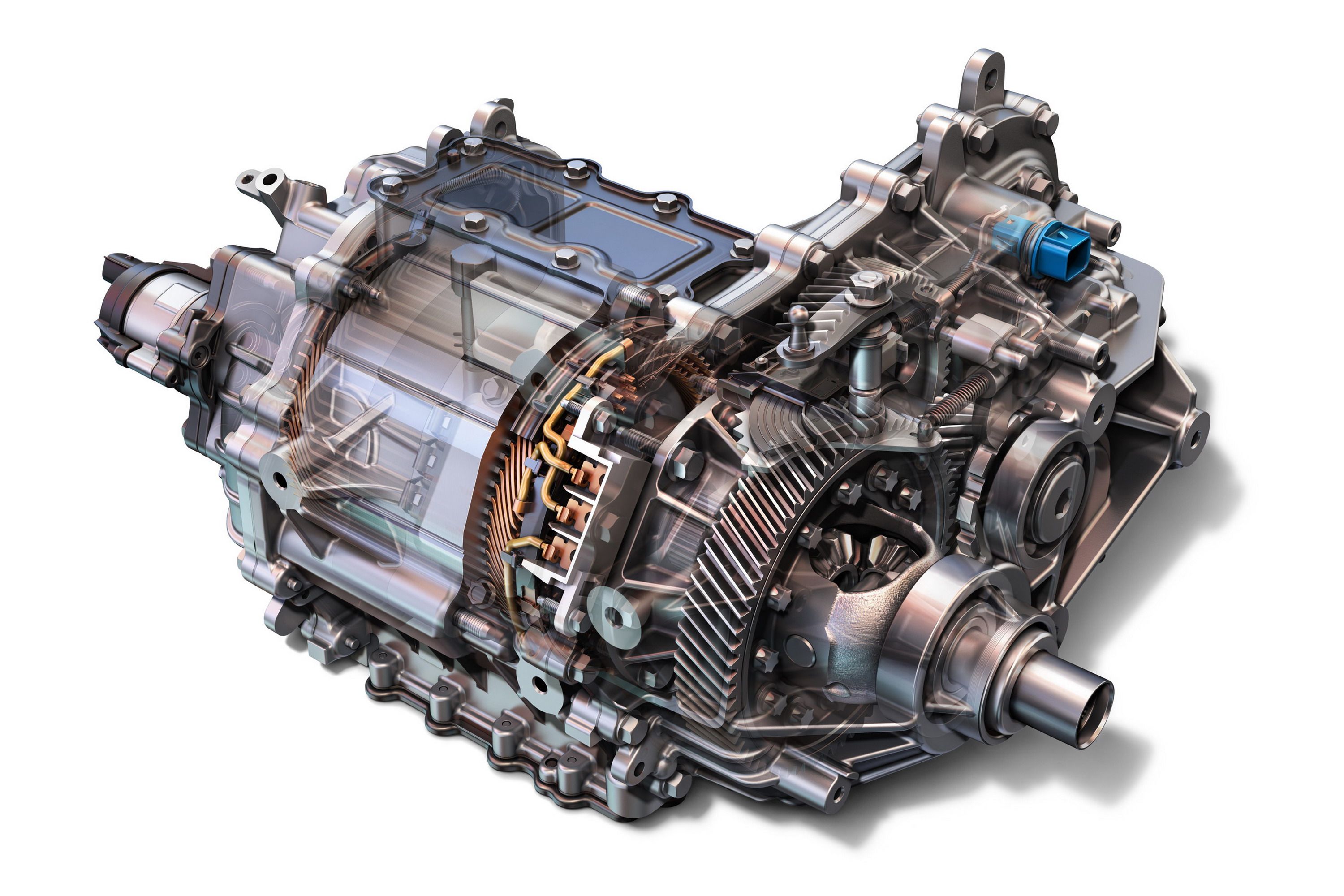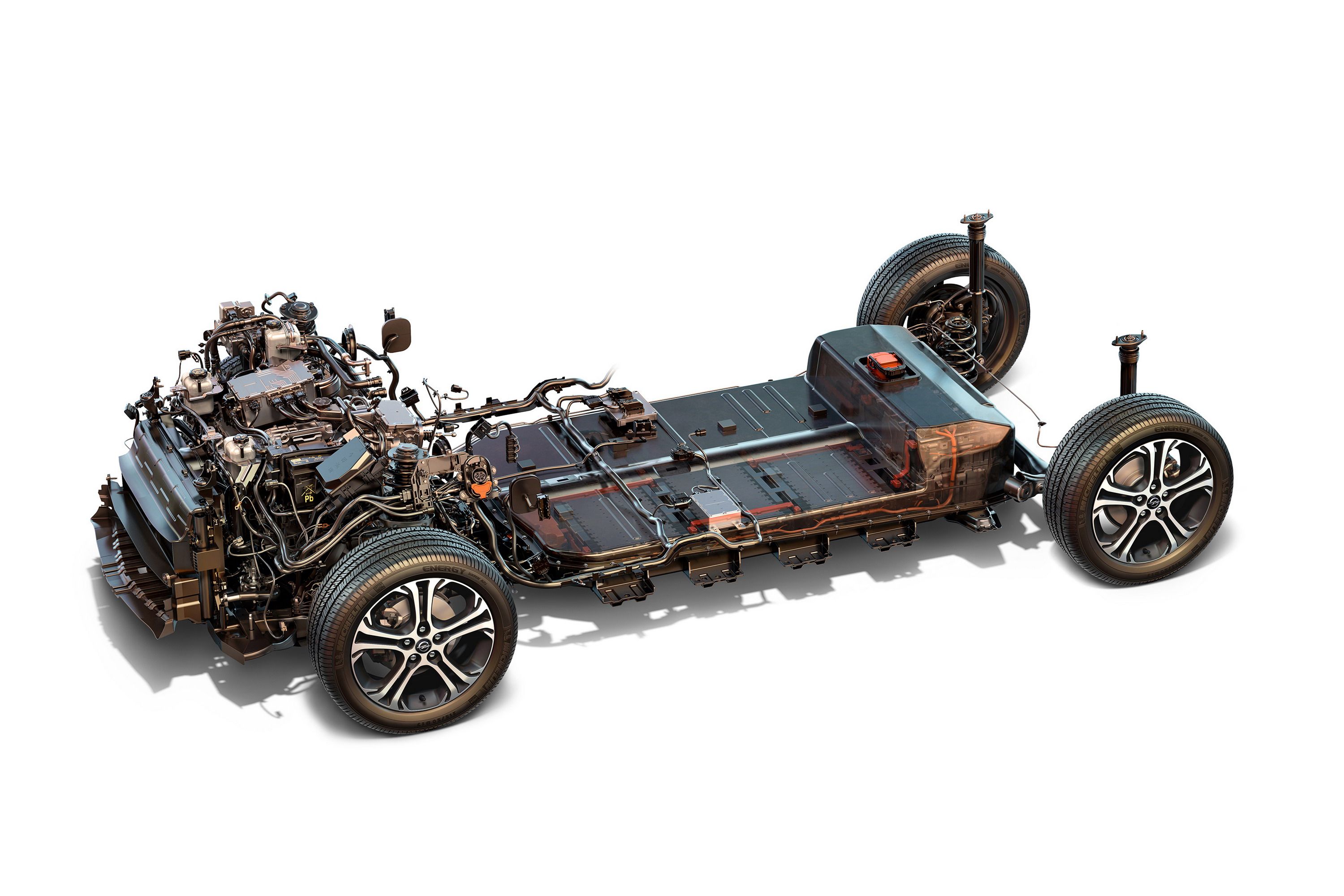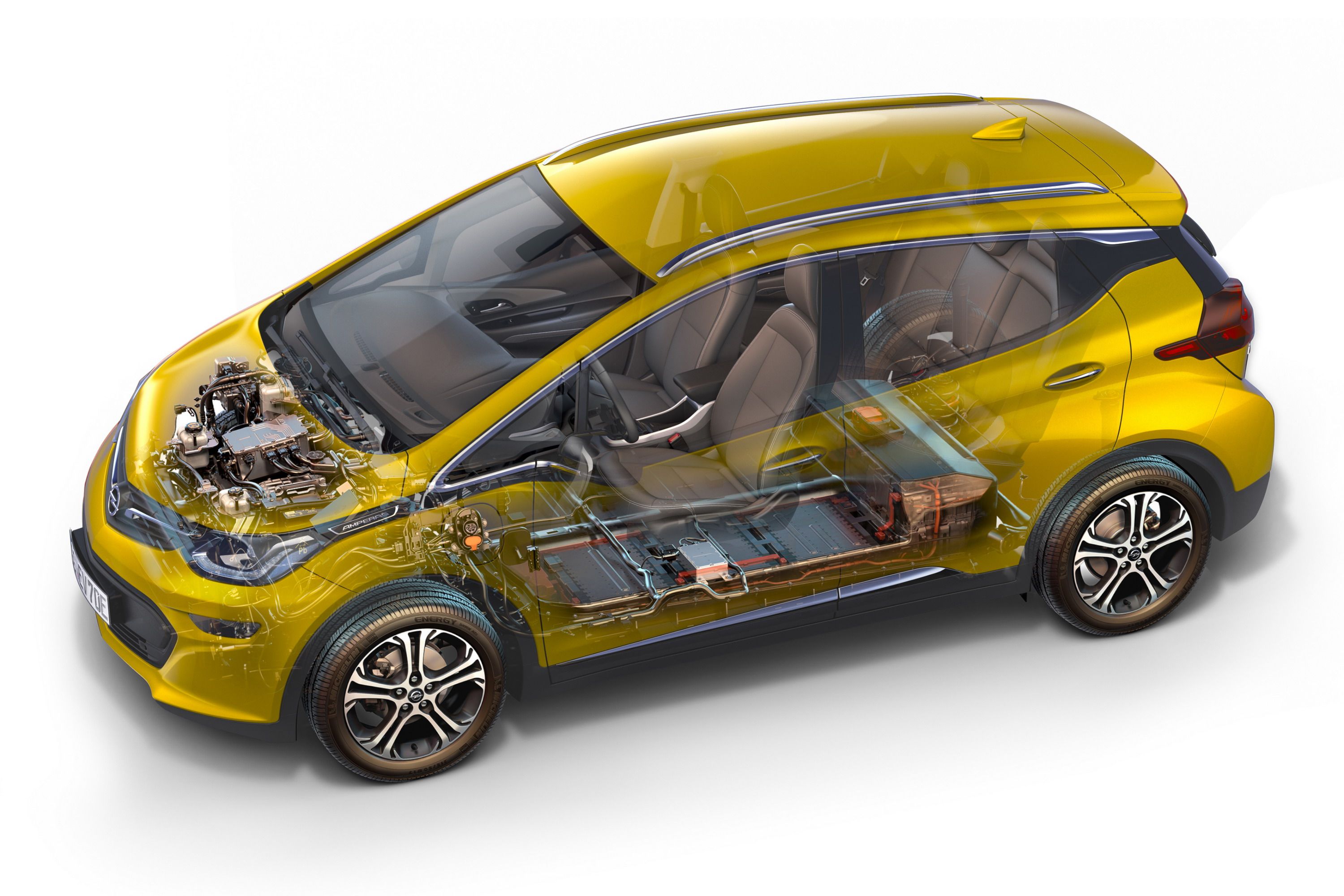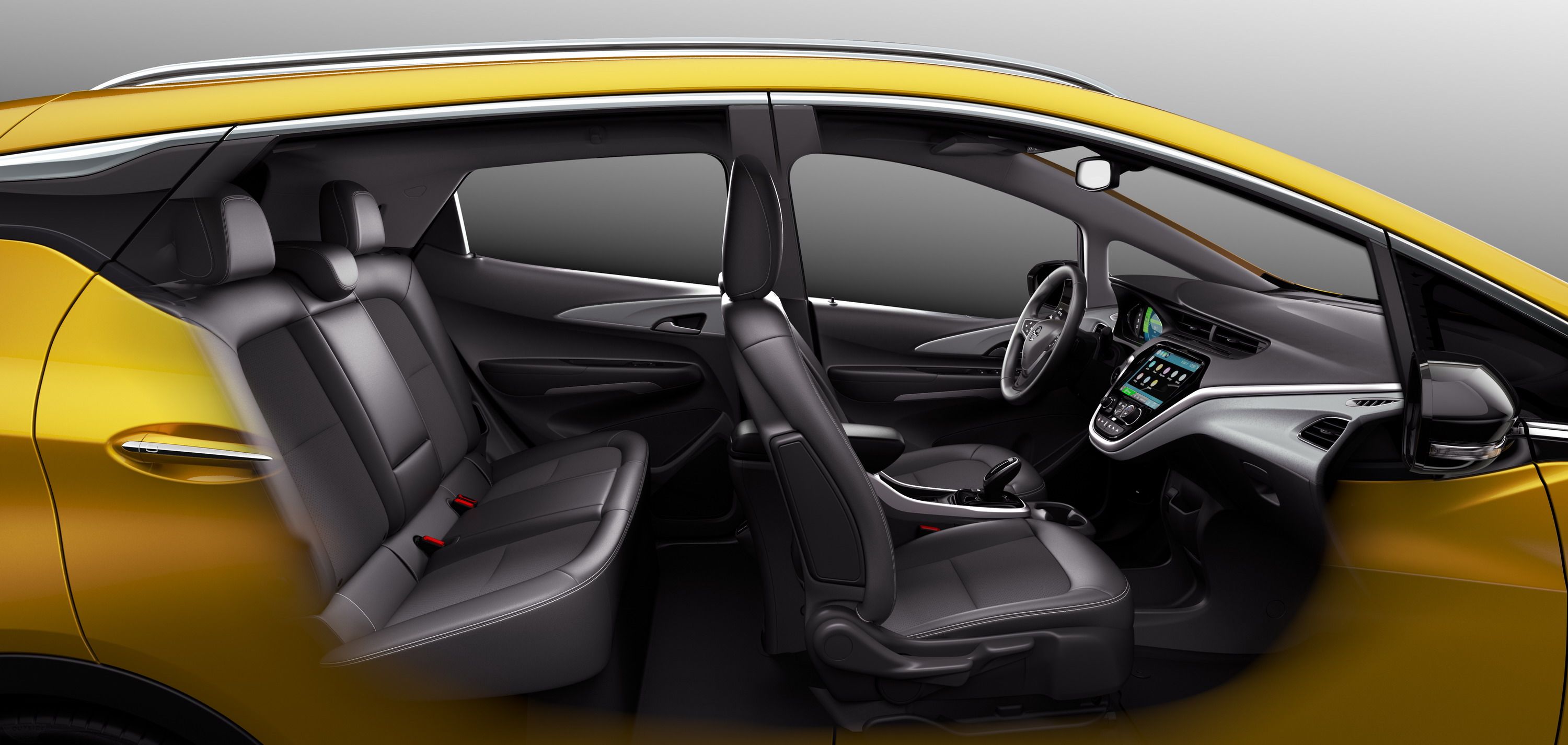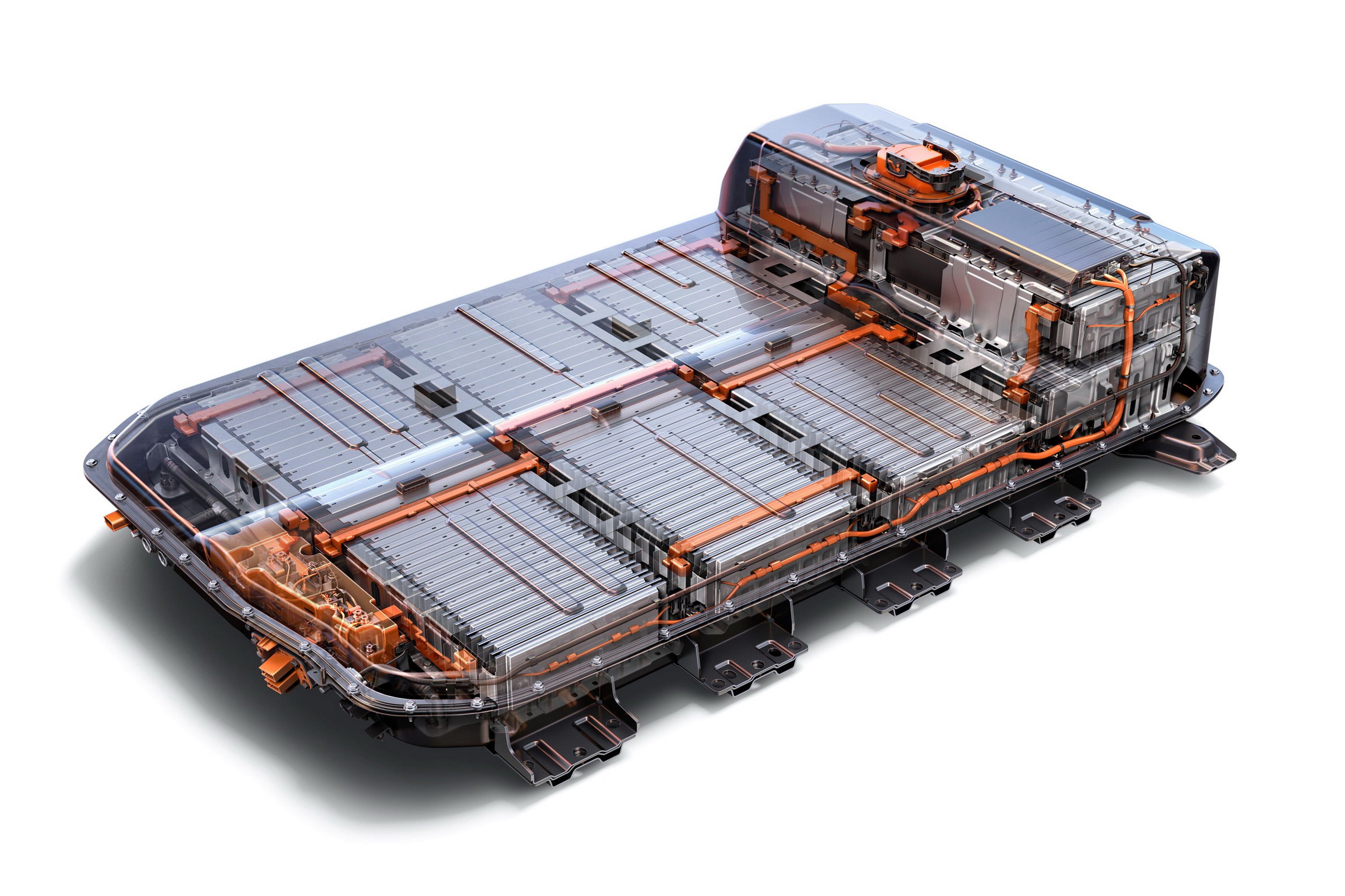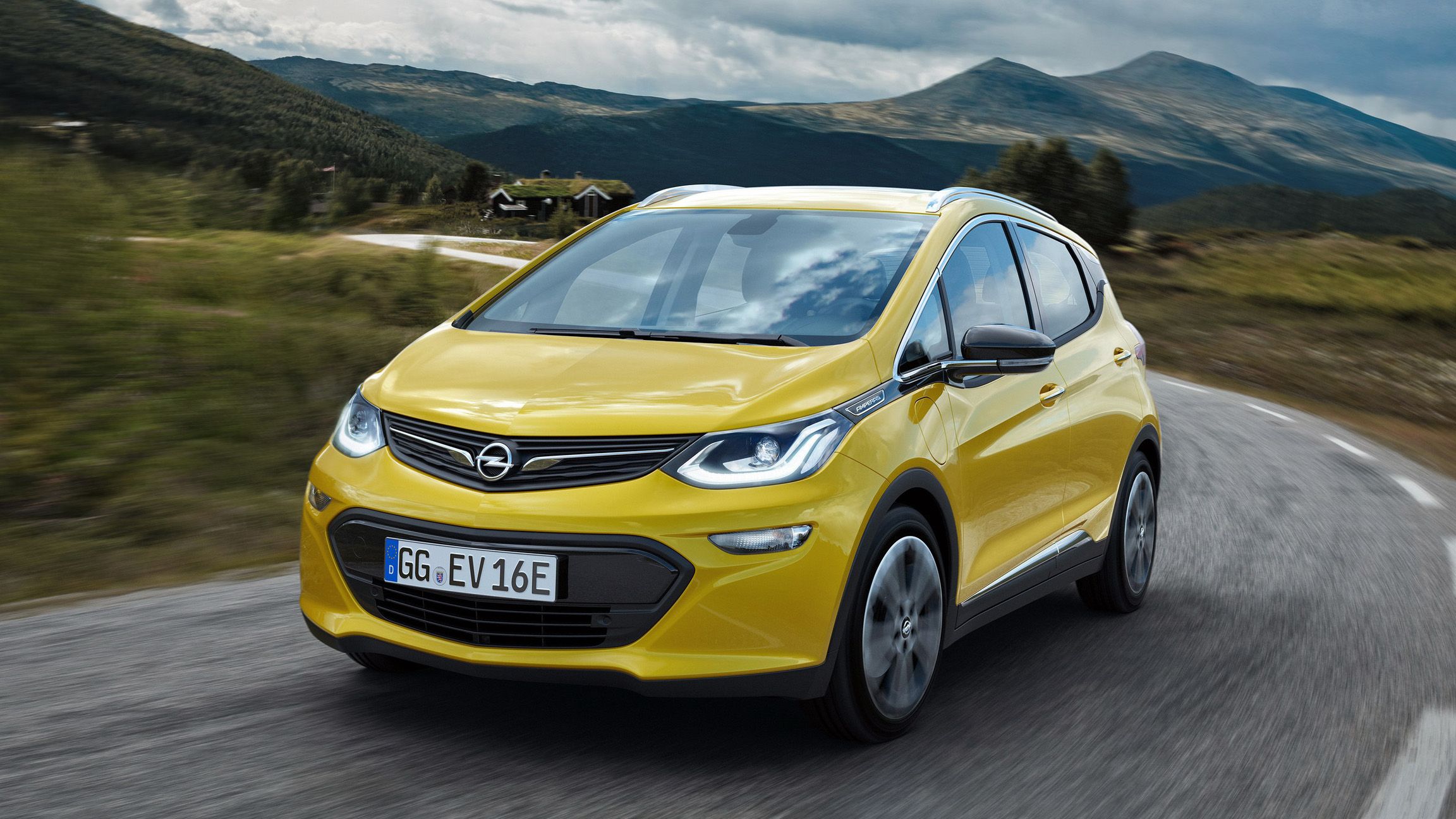When Chevy announced the Bolt EV back in January, we knew that eventually Opel and Vauxhall would follow suit. It took a while, but we eventually started seeing spy shots of the Opel version, which is, of course, being called the Ampera-e. We knew from the spy shots that the Ampera-e would be nothing more than a rebadged Bolt EV, and sure enough, it made its debut at Paris looking identical to its American cousin with the exception of some different badging. The good news is that the Ampera-e gets the Bolt's advanced electric drivetrain that promises around 236 miles on a single charge. It does pack a pretty interesting and spacious interior with features like Bluetooth phone connectivity, a 4G LTE Wi-Fi hotspot and a navigation system with EV-optimized routing.
If that electric range sounds familiar, that’s because it’s identical to that of the Bolt EV here in the U.S., which means that we know for sure it not only looks the same but is motivated by the same powertrain. But, that’s okay when it comes to the competition as the Ampera-e will beat out just about every other EV out there as far as range goes Competition from competitors like the Fiat 500e, Volkswagen e-Golf, and Renault Zoe is strong, but none of them offer up more than 200 miles on a single charge. With the original Ampera being a complete flop for GM, the Ampera-e may be able to save the name if Opel can actually get customers to give it a try.
With that said, let’s take a closer look at the new Ampera-E and talk a little more about it.
Continue reading to learn more about the 2017 Opel Ampera-e.
2017 Opel Ampera-e
- Make: Array
- Model: 2017 Opel Ampera-e
- [do not use] Vehicle Model: Array
Exterior
If you’ve already seen the U.S.-spec Chevy Bolt EV, there’s nothing really fascinating to talk about here. The Opel Ampera-e is every bit a Chevy Bolt, all the way down to the exterior lighting and the wind-tunnel approved exterior design. When the spy shots of the Ampera-e made their debut, there was some camo around the headlights and taillights, leading us to believe there may be some minor differences, but that was just GM trickery at its best.
Up front, the look of the car exposes that GM was more worried about wind tunnel performance than physical appearance. Of course, that’s a necessity to get a decent range with battery technology being what it is. The headlights are somewhat sleek with a healthy dose of LED lighting along the bottom edge. The same grille and air dam from the U.S. model carry over, however, the Ampera-e gets the Opel badge up front instead of a Chevy bowtie. Unfortunately, the aerodynamic nature of the body gives the car a somewhat weird look from the A-Pillars back with a longer windshield that is angled somewhat awkwardly.
To the sides, there’s nothing really special to talk about. The Ampera name replaces the Bolt name on that weird extension of the headlights on the fender. The side view mirrors are mounted just below the awkward-looking stationary glass ahead of the front door glass. The mirrors kind of remind me of that one kid from school that always got made fun of for his Dumbo-like ears. Yup; that’s the Ampera-e for you. But, if you want electric range, you have to sacrifice style a bit – unless you go with the wallet-hitting Tesla, which is in a completely different class.
Around back, the Ampera-e is also identical to its U.S.-based cousin. The taillights to feature a unique and stylish layout, while the bottom of the hatch makes it look like the car’s rear end is smiling at you. The car definitely looks much better from behind, however, that weird roofline still gives it a somewhat awkward appearance. Then, there are those lights in the rear fascia that serve as turn signals, reverse lights, and taillights. The car probably would have looked better if all of these lights were integrated into one unit, but the Ampera-e is somewhat different in all respects anyway, so it does kind of fit.
Interior
Of course, we didn’t get a look at the interior from the spy shots that we saw prior to the Ampera-e’s debut in Paris, but as we suspected, it’s all Chevy on the inside. That’s not necessarily a bad thing, though, as the Ampera-e actually has a pretty stylish interior. The floating dash is a like a breath of fresh air for anything from GM, and the way the two-tone nature of the dash integrates with the door trim gives the car a wide-open feel. The infotainment system in the center stack offers the usual connectivity options via Apple CarPlay and Android Auto. The system can store personalized information for up to 10 devices, and is designed to use minimal energy to help preserve overall range.
The Chevy Bolt comes complete with an available 4G LTE hotspot, so there’s no reason to think that the Ampera-e won’t offer the same luxury. The built-in navigation system should also feature Europe- and EV-specific routing that is optimized for electric range. The instrument cluster is rather unique for an EV and features a central display with lots of green backlighting – you know, to help remind you that you’re going green when you’re driving.
The interesting thing about the interior comes in the form of the center console. The center stack, for the most part, drops straight down to a very low setting portion of the center console. There is a storage pocket her to go with a small compartment with a door. Two cup holders sit just ahead of the gear shifter that is centrally located in the center console. A silver insert surrounds the gear shifter area, effectively linking the center console to the dash and seats visually. The seats appear to be rather comfortable and feature the same two-tone styling as the dash. You’ll find that silverfish gray color on the front out outer edges of the seat, with the center and inner edges wrapped in black leather. All told, it’s a pretty decent design and is rather inviting compared to the look of the exterior.
Drivetrain
Motivating this all-electric feat of badge engineering is an electric motor that Opel claims can deliver the equivalent of 204 horsepower. Range is rated at the NEDC test cycle as greater than 310 miles. But, keep in mind that the NEDC scale is heavily flawed when compared to real world driving characteristics and is used primarily for PR. The WLTP scale is much more accurate and puts the Ampera-e in the range of about 380 km worth of range, or about 236 miles. This is certainly more realistic, however, depending on our driving style you will probably get closer to about 210 miles per charge. The car should come standard with a regenerative braking system, and a 240-volt charger should also be available for overnight charging.
Opel didn’t release very much information in regards to charging times, but given the car's identical nature to the Bolt EV, we can look to Chevy for that information. The Bolt EV takes a full charge from near empty in about 9.5 hours on a 240-volt charger. One hour will get you about 25 miles worth of range. Chevy has a number of DC fast chargers here in the U.S. If that system makes it into Europe, a 30-minute charge on that system will get you about 90 miles worth of range. A 110-volt connection can also be used to charge the Ampera-e, however, expect the charging time to take forever in comparison to the 240-volt charger system.
According to Opel, the Ampera-e “offers the feistiness of a sports car.” What it means by that is that it can make the sprint to 31 mph in about 3.2 seconds. While it hasn’t confirmed 0-to-60 mph times, it’s safe to say it will be around 6.5 to seven seconds, depending on the car’s overall charge. The good news here is that the 60 kWh battery packs are actually integrated into the underbody of the car, which means there is no sacrifice to interior space and the car has a fairly low center of gravity.
Prices
It’s really hard to say how much Opel or Vauxhall is going to charge for the Ampera-e, but we know the Chevy Volt starts out at $30,000 after incentives, which means consumers in the U.S. need to pony up $37,500 and wait for Uncle Sam to give them back the $7,500 tax credit. As for the Opel and Vauxhall versions, there could be various incentives or rebates depending on the market, but for the most part, expect to shell out around $40,000 with taxes, options, and destination fees.
Competition
BMW i3
Once the Ampera-e hits the market, one of its competitors will be the BMW i3. As of the time of this writing, the base model gets just 81 miles of range per charge, which is significantly less than what the Ampera-e will likely get if it uses the same battery and drivetrain as the Bolt EV. The i3 delivers a total of 170 horsepower from its electric-drive system, which is enough to propel the little car that could to 60 mph in around seven seconds – the same amount of time we expect the Ampera-e to take for the same benchmark. Right now, the base i3 starts out at $42,400 here in the U.S. But, if you want to get the 150 miles offered by BMW’s range extender, you’re going to have to pony up an extra $3,850, which brings the starting price up to $46,250. For the record, the range extender adds on some extra weight that increases the i3’s 60-mph-sprint to 7.8 seconds. Based on range and price, I would probably have to go for the Ampera-e over the i3 at this point.
Read our full review on the BMW i3 here.
Nissan Leaf
Okay, so the Nissan Leaf is an electric vehicle, but Nissan has a habit of shooting itself in the foot over this little EV. Just recently Nissan launched an advertising campaign that targeted Tesla’s Model 3, saying “why wait for a Model 3 when you can drive an all-electric Nissan Leaf now?” Well, Nissan didn’t do itself any justice as most people got a good laugh from the campaign. Why? Well, because the Nissan Leaf, in standard form, only offers up 84 miles worth of range between charging. You can move up to higher trim levels for more range, but you only get 107 miles. So, why wait for Tesla? 200+ miles of range, that’s why. That said, the Ampera-e will easily trump the Leaf in range, but there is one benefit to considering the leaf over models like the Ampera-e or the i3 – Price. The Leaf currently starts out at $29,010, which is significantly cheaper than models like the Ampera-e. If you want more than 84 miles, however, you’ll have to upgrade to the $34,200 Leaf SV or the $36,790 SL. Keep in mind that even the range-topping SL still has a range of just 107 miles, so unless your daily commute is short, you might want to look at other options.
Read our full review on the Nissan Leaf here.
Conclusion
A car like the Chevy Bolt, Opel Ampera-e, or even the Nissan Leaf for that matter does have a purpose, but we’re far from being able to replace our gas-powered cars when it comes to longer trips. 236 miles of usable range is pretty good, and it’s a huge step up from what we had just a few years ago (except for Tesla, of course), but until we can evolve solar charging to a viable solution that will give us unlimited range, cars like the Ampera-e will only be good for fairly short trips – unless you like to drive a couple hundred miles and wait for nearly half a day to charge up enough go another 200 miles. With the plug-in Ampera being such a flop, it’s not clear as to whether or not the Ampera-e has a bright future, but it’s a big step forward. The next major step in EV evolution needs to be solar charging or another way to significantly increase range to go with lower pricing. With the Bolt EV starting upward of around $40,000 the Opel Ampera-e should have a similar starting point.
Spy Shots
July 1st, 2016 - First testing session


